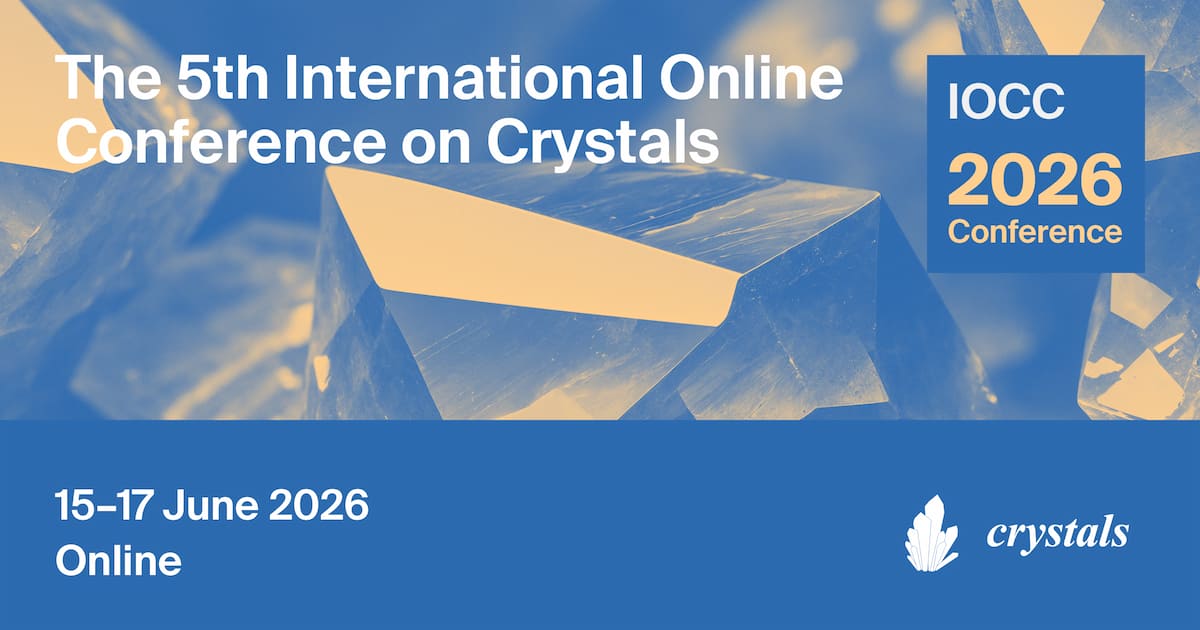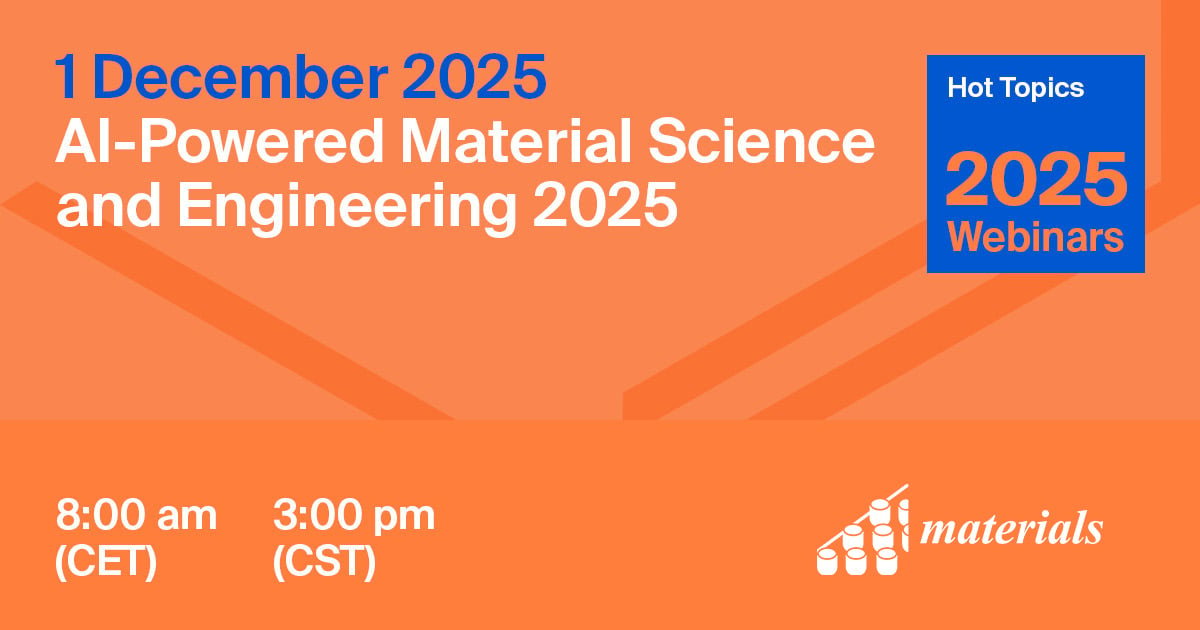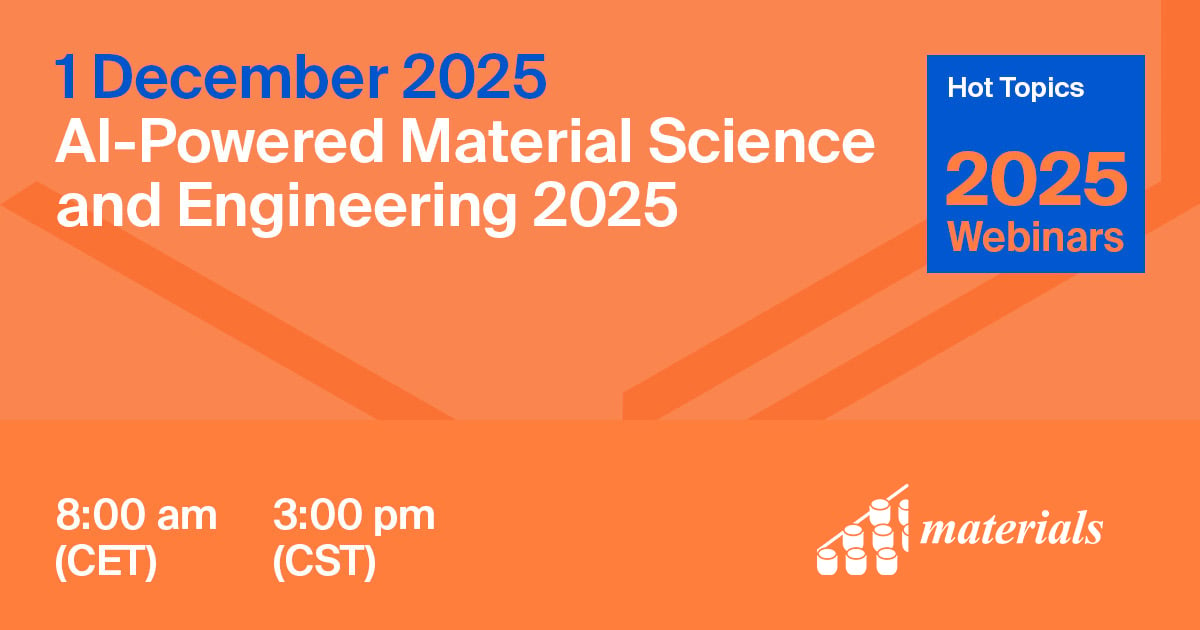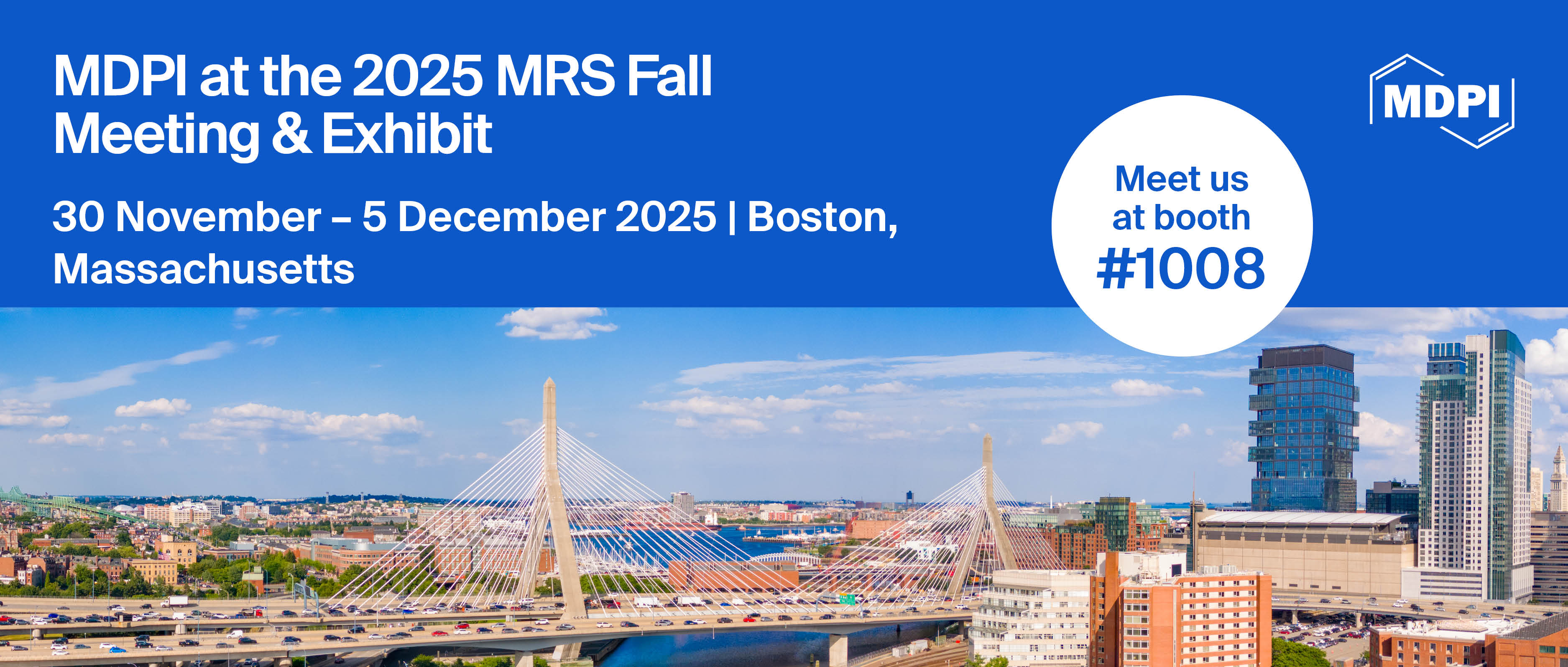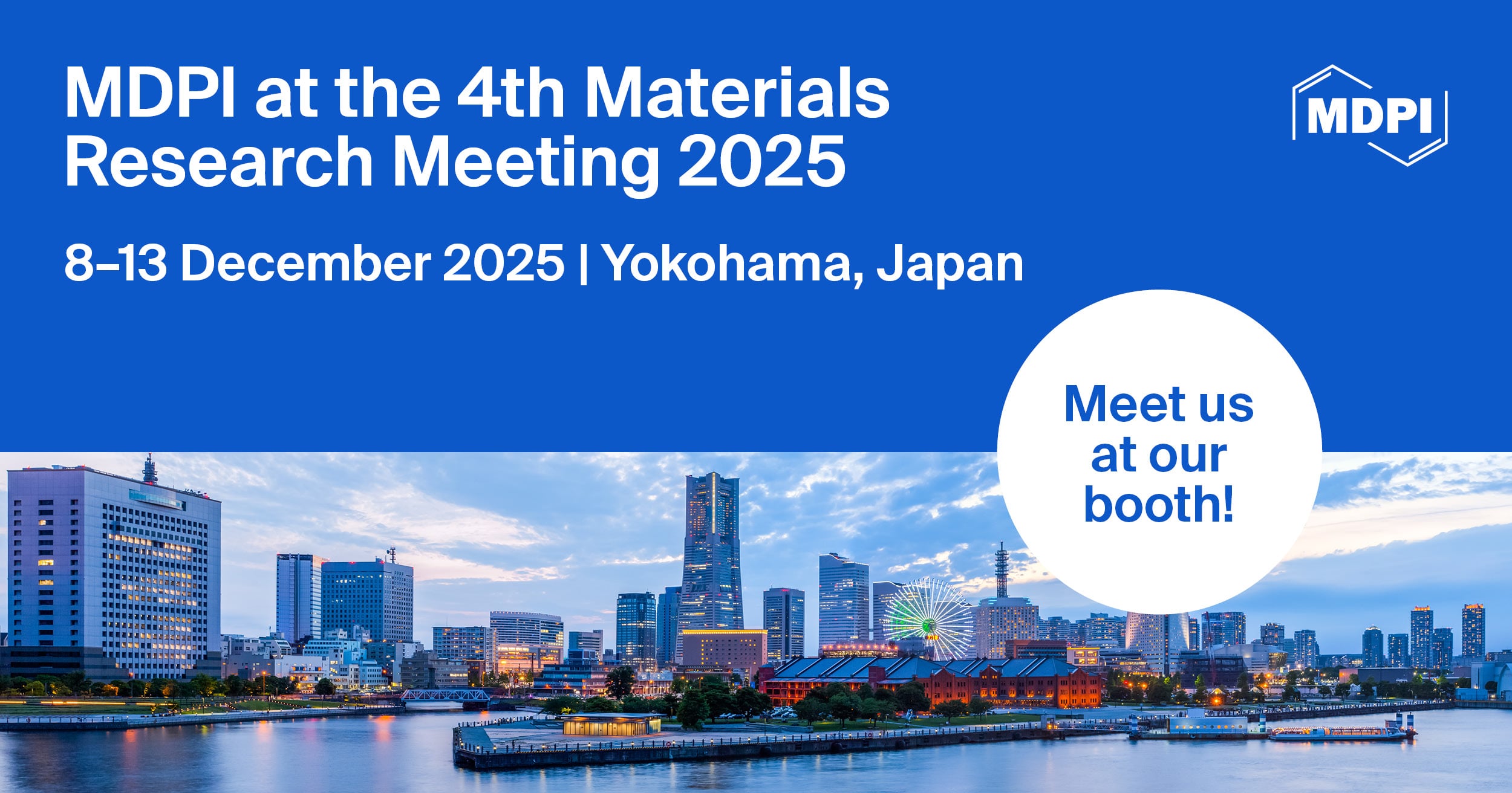- 3.2Impact Factor
- 6.4CiteScore
- 16 daysTime to First Decision
News & Conferences
Latest News & Announcements
Latest Conferences
Propose a Conference Collaboration
Promote and publicise your upcoming conference with MDPI.
All News & Conferences
MDPI Conference
The 5th International Online Conference on Crystals
15 - 17 June 2026
News & Announcements
Article Layout and Template Revised for Future Volumes
11 December 2025
News & Announcements
MDPI Webinar | AI-Powered Materials Science and Engineering, 1 December 2025
28 November 2025
1 - 1 December 2025
News & Announcements
Hot Topic Series | AI-Powered Material Science and Engineering
28 November 2025
News & Announcements
AI-Powered Material Science and Engineering | Interview with Dr. Fernando Gomes de Souza Junior—Editorial Board Member of Materials
27 November 2025
News & Announcements
Meet Us at the 2025 MRS Fall Meeting and Exhibit, 30 November–5 December 2025, Boston, Massachusetts, USA
26 November 2025
News & Announcements
Meet Us at the 4th Materials Research Meeting 2025, 8–13 December 2025, Yokohama, Japan
11 November 2025
News & Announcements
Welcoming New Editorial Board Member of Materials—Dr. Gaetano Giunta
7 November 2025
News & Announcements
MDPI Launches the Michele Parrinello Award for Pioneering Contributions in Computational Physical Science
6 November 2025
News & Announcements
Conference Collaborations: Thank you to the Editorial Board Members and Guest Editors of Materials Who Helped to Promote the Journal at Academic Conferences
6 November 2025
News & Announcements
Materials Best PhD Thesis Award—Open for Applications
6 November 2025
of 48


